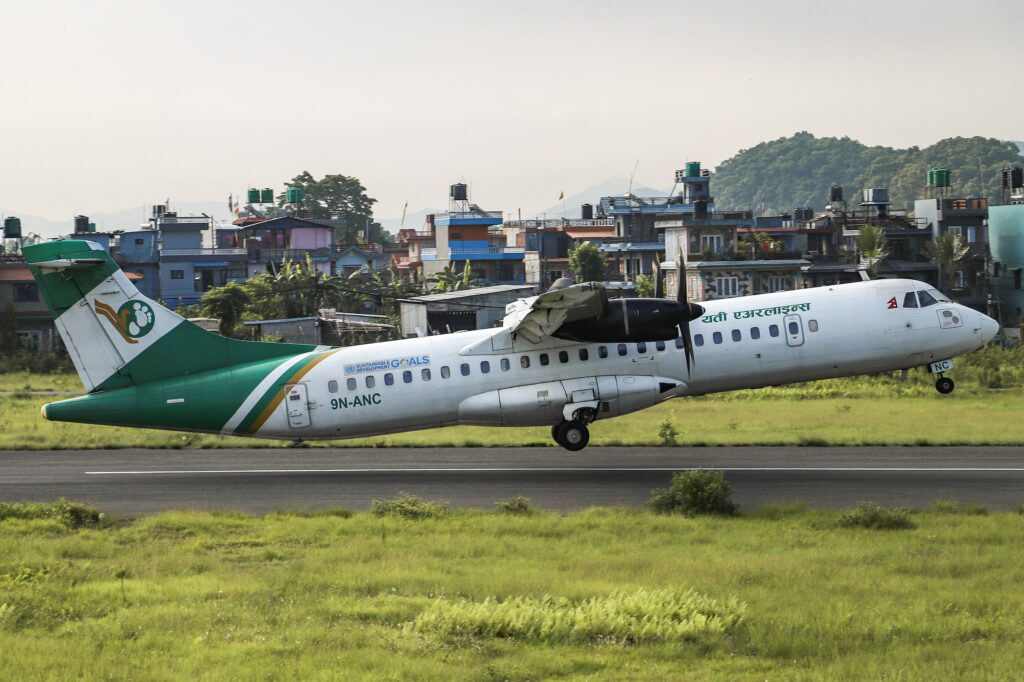LONDON – The Nepal Accident Investigation Commission has now released its preliminary report on the accident involving a Yeti Airlines ATR 72 twin turboprop commuter aircraft at Pokhara International Airport.
Having recovered the Cockpit Voice Recorder (CVR) and Flight Data Recorder (FDR) for analysis, an early disclosure from the Investigation Commission this month had noted that both engines of the twin turboprop aircraft had been in the feather position during the approach phase.
The commission’s preliminary report now provides further detail of events.
Preliminary report observations
On 15 January 2023, Yeti Airlines scheduled Flight 691 was operating between Kathmandu (VNKT) and Pokhara International Airport (VNPR).
The same flight crew had operated two sectors between VNKT-VNPR and VNPR-VNKT earlier that morning. The accident occurred during a visual approach to Pokhara’s RWY12 on what was the third flight carried out by the crew members that day.
The flight was operated by two Captains, with one Captain being in the process of obtaining aerodrome familiarisation for operations into Pokhara. The Captain being familiarised was flying in the left-hand seat as the Pilot Flying (PF). The other Captain occupied the right-hand seat and was acting as Pilot Monitoring (PM).
The takeoff, climb, cruise and initial descent into the Pokhara circuit area were all reported to be normal. The aircraft joined the circuit on the downwind leg for RWY12 – the landing gear was extended and 15° of flap was selected to commence the approach.
The PF disengaged the autopilot at an altitude of 721 feet above ground level (AGL), and then called for 30° flap selection. The Pilot Monitoring (PM) responded “Flaps 30 and descending.”
The Flight Data Recorder, however, did not record any movement of the wing flaps at this point. Instead the propeller rotation speed decreased to less than 25%, and the torque on both engines started decreasing to 0%.
This is consistent with both engines going into the feathered condition.
Subsequently, recorded data shows that the power lever angle was increased from 41% to 44%, however the torque from both engines remained at 0%. With the propellers in feathered condition, no thrust will be produced.
From that point, a recorded radio altitude annunciation was heard at 500 feet. The aircraft reached a maximum bank angle of 30° at this altitude. The PF consulted the PM on whether to continue the left turn, and the PM replied to continue.
Subsequently the PF asked the PM whether it was necessary to continue the descent. The PM responded it was not necessary and instructed to add a little power. At that point the flap surface movement to 30° was noted.
ATC issued the aircraft with the clearance to land, and the PF twice noted that the engines were producing no power. Power levers were subsequently advanced, firstly to 62° and then to the maximum power position.
With the aircraft initiating its final turn at 368 feet AGL, the PF handed over control to the PM, again saying that there was no power from the engines.
With the aircraft at 311 feet AGL, the stick shaker activated warning the crew that the aircraft’s angle of attack (AoA) had increased up to the stick shaker threshold.
When the aircraft banked towards the left abruptly a second sequence of stick shaker warnings was activated. At 10:57:32, the CVR recorded the sound of an impact.
Summary
Being a preliminary report, the accident investigation commission’s documentation provides a statement of observations. The investigation process into the Yeti Airlines flight will continue until the delivery of a final report.









